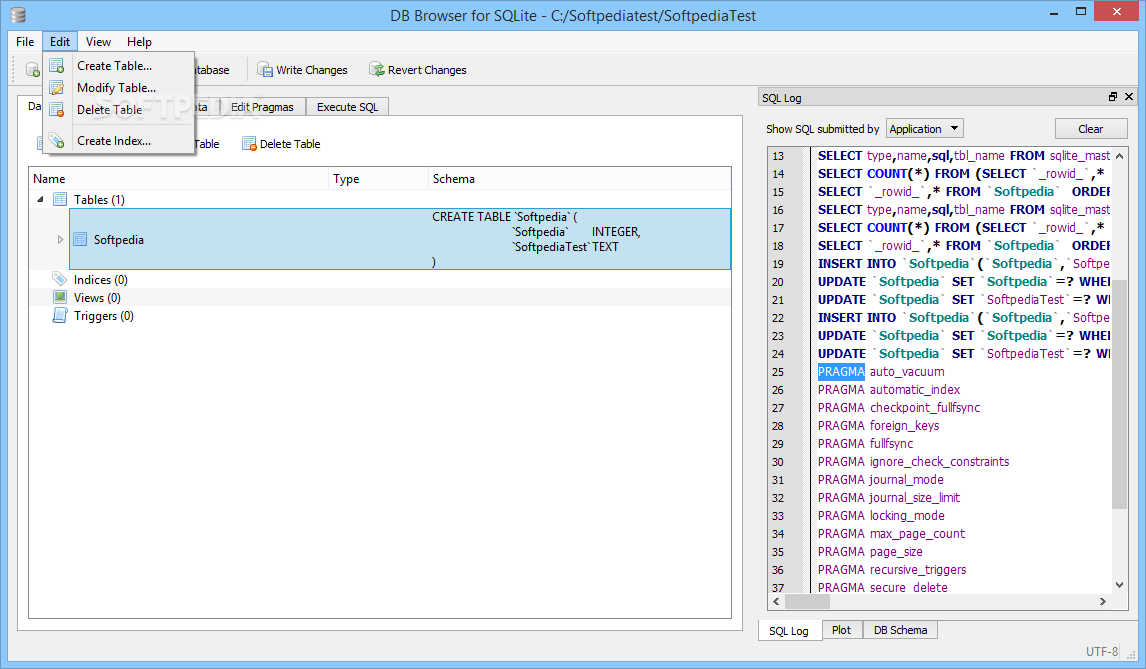

- #Db browser for sqlite sort multiple columns generator#
- #Db browser for sqlite sort multiple columns drivers#
- #Db browser for sqlite sort multiple columns update#
- #Db browser for sqlite sort multiple columns driver#
- #Db browser for sqlite sort multiple columns mac#
#Db browser for sqlite sort multiple columns generator#
In simple terms The Forensic Browser for SQLite is a visual, Drag and Drop, SQL query generator that allows a user to examine every column and row in every table in any database and produce custom compound reports across multiple tables. The Forensic Browser for SQLite was written to address all these issues. We really need a tool that will allow us to create a nicely formatted custom report on just those tables and columns that we want, restricting the report, if required, to just certain users/rows and on databases that we may never have seen before. There are literally millions of apps that use SQLite as storage on both phones and desktop and as mentioned above these apps usually have a changing DB structure and contain masses of data. A tool that produces a nice simple report cannot possibly extract all of the relevant data from these columns – if we don’t look at them all how do we know that we are not missing crucial evidence? For instance the Skype contacts table contains (when I last counted) 98 different columns. Some tables are huge, and by that I mean contain lots of data well beyond the ability of a generic tool to display in a nicely formatted report. New tables and fields are added to databases all the time and although a tool might produce what looks like a comprehensive report, without looking further we don’t know what we are missing! Is our tool extracting all the relevant information for our case? (very often not).What do we do if our tool doesn’t support that DB? (there are lots).What happens if the database schema has changed? (this happens regularly).This might be OK, but we are potentially missing a whole host of evidence. We quite often usually leave the investigation there and look no further. The great benefit of having multiple tools to your disposal is that we do not need to work with tools that stand in our way.We all know that SQLite has become pervasive and is common on pretty much every investigation we do and we often rely on your Swiss army knife type tools to produce reports on the supported databases found in an image. If one tool does not fit your needs, do not hesitate, and take another one. However, that initial effort is quickly compensated when you just need to learn one tool instead of 3 or 4.Īll 3 tools allow you look into your SQLite database. In my opinion you need to learn too much for just accessing SQLite. The more you want to do, the more I suggest you use SQLiteStudio.ĭataGrip is a good choice if you work with many different database vendors or you do that much work that the massive feature list is an asset and not an obstacle. Both tools offer similar features for the casual user and do not require any preparation to access your database. If you just want to work with SQLite, DB Browser for SQLite and SQLiteStudio are good choices. Unfortunately, I do not yet have a more interesting example I can show you.Īll 3 tools do a good job to access your data in an SQLite database.

The Northwind example database is not the most interesting one for this feature. Select the database, then go to Diagrams | Show Visualization to see how your tables are connected (or not): One of the many helpful tools in DataGrip is the ER diagram viewer. If this is done, you can access your database:
#Db browser for sqlite sort multiple columns driver#
It is the only tool of the 3 that needs the extra step of downloading the driver to access your SQLite database. Those extra features come at the price of €89.00 for the first year.
#Db browser for sqlite sort multiple columns mac#
It also runs on Windows, Mac and Linux but offers significantly more features. With a bit more time to learn the tool I found the “ Data” tab that shows you the rows in your table without a detour to SQL:ĭataGrip from JetBrains allows you to access a wide range of database systems from various vendors. As I tried it the first time, I was a bit annoyed for the extra step to run the generated SELECT script.
#Db browser for sqlite sort multiple columns update#
It runs on Windows, Mac and Linux with a more polished user interface and a higher update frequency. SQLiteStudio is very similar to DB Browser for SQLite. To view the data in your table, right-click on the table and select “ Browse Table” or go to the “ Browse Data” tab and select your table in the drop-down list: A speciality of this tool is the create table script you find next to each table: The database structure tab gives you an overview on your tables and indices. You can connect to an existing SQLite database or create a new one. Today I give you a quick overview on 3 no-code tools to explore your SQLite databases.ĭB Browser for SQLite runs on Windows, Mac, Linux and FreeBSD.
#Db browser for sqlite sort multiple columns drivers#
Not only does it have drivers for all current programming languages, but it also works without the hassle of creating a server to host it. SQLite is a great little database for all kinds of personal data storage.


 0 kommentar(er)
0 kommentar(er)
